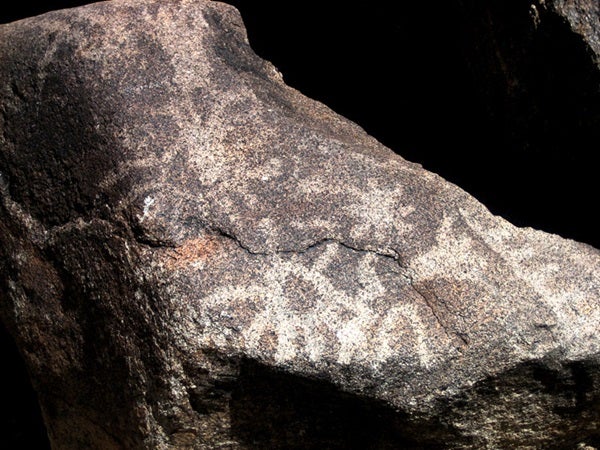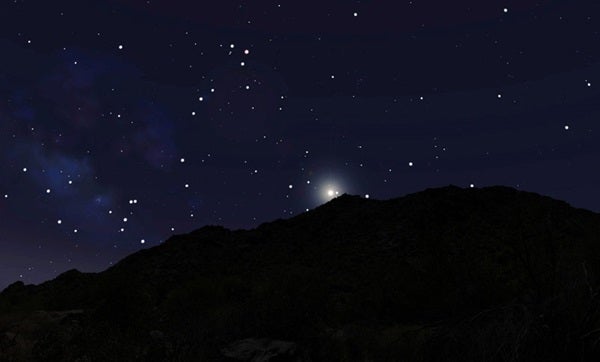One millennium ago, the brightest star in recorded history appeared briefly in the southern sky. Chroniclers in Asia, the Middle East, and Europe marveled at the sight and tried to glean its astrological meaning. Modern astronomers identify the event as a supernova, the explosive death of a star some 7,100 light-years away. With an estimated magnitude of –7.5 at its brightest, the supernova rivaled the glow from a quarter Moon.
The petroglyph is located in Arizona’s White Tanks Regional Park, near Phoenix. The Hohokam people occupied the region from about a.d. 500–1100. The carving shows a large rayed circle beneath a scorpion symbol. The 1006 supernova was visible in the constellation Lupus, southwest of Scorpius the Scorpion. “Without my background in astronomy, I probably wouldn’t have recognized the petroglyph for what it might represent,” Barentine says. The astronomers presented their findings today at the American Astronomical Society meeting in Calgary, Canada.
Petroglyphs, which are formed by hammering away a rock’s surface, are among the most durable art forms. “Standing in the desert heat after studying the petroglyphs, the span of the ages hit home,” Esquerdo muses. “It was the change in the sky that had brought that artist, as well as us, to that spot 1,000 years apart.”
Chemical dating, which relies on the abundance of certain elements in the rock varnish, could narrow down the petroglyph’s age. If studies confirm the carving dates from the early 11th century, the scientists say it would attest to a connection with the supernova. Knowing exactly when one piece of rock art was created would benefit archaeologists. Barentine explains: “Quantitative methods such as carbon-14 dating … lack precision of more than a few decades, so any depiction in art that can be fixed to a specific year is extremely valuable.”
However, archaeologists and astronomers specializing in how ancient peoples saw the sky say a link between the carving and the 1006 supernova is circumstantial, at best. “There are many images out there that could be interpreted as star bursts or suns or planets, so you have to be very cautious,” Todd Bostwick, a Phoenix archaeologist and an expert on Hohokam culture, told the Associated Press.
Other Southwest petroglyphs have been associated with historic astronomical events. The best known is a star-and-crescent symbol painted on rock in Chaco Canyon National Monument, New Mexico. Astronomers once suggested the art depicts a July morning when the crescent Moon was near the supernova of 1054, which formed the Crab Nebula. However, this interpretation is no longer widely accepted.











